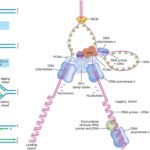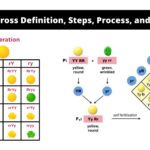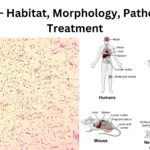Explain the process of eutrophication of water, limited to: • increased availability of nitrate and other ions • increased growth of producers • increased decomposition after death of producers • increased aerobic respiration by decomposers • reduction in dissolved oxygen • death of organisms requiring dissolved oxygen in water
Explain the process of eutrophication of water, limited to: • increased availability of nitrate and other ions • increased growth of producers • increased decomposition after death of producers • increased aerobic respiration by decomposers • reduction in dissolved oxygen • death of organisms requiring dissolved oxygen in water
Please login to submit an answer.
Eutrophication is a complex process that occurs in aquatic ecosystems, primarily driven by the excessive input of nutrients, particularly nitrates and phosphates, from human activities such as agriculture, wastewater discharge, and urban runoff. This process can lead to significant ecological changes and degradation of water quality. Below is a detailed explanation of the stages involved in eutrophication.
1. Increased Availability of Nitrate and Other Ions
Eutrophication begins with the introduction of excess nutrients into a water body. Key sources of these nutrients include:
- Agricultural Runoff: Fertilizers used in agriculture often contain high levels of nitrates and phosphates. When it rains, these nutrients can wash into nearby rivers, lakes, and coastal waters.
- Wastewater Discharge: Untreated or inadequately treated sewage can introduce significant amounts of nitrogen and phosphorus into aquatic environments.
- Urban Runoff: Stormwater runoff from urban areas can carry fertilizers, detergents, and other nutrient-rich substances into water bodies.
As a result, the concentrations of nitrates and other ions increase significantly in the water.
2. Increased Growth of Producers
The influx of nitrates and other nutrients stimulates the growth of primary producers, particularly phytoplankton (microscopic algae) and aquatic plants. This phenomenon is characterized by:
- Algal Blooms: The abundant nutrients promote rapid algal growth, leading to dense blooms that can cover large areas of the water surface.
- Increased Photosynthesis: With more producers present, photosynthesis rates increase, resulting in higher oxygen production during daylight hours.
While this initial growth may seem beneficial, it sets the stage for subsequent ecological changes.
3. Increased Decomposition After Death of Producers
As algal blooms reach their peak, they eventually die off due to various factors such as nutrient depletion or unfavorable environmental conditions (e.g., lack of light). The decomposition process begins:
- Decomposition by Microorganisms: Dead algae and plant matter are broken down by bacteria and other decomposers in the water.
- Rapid Decomposition Rates: The high biomass from algal blooms leads to a substantial amount of organic material that requires decomposition.
4. Increased Aerobic Respiration by Decomposers
The decomposition process significantly increases the activity of aerobic decomposers:
- Oxygen Consumption: As bacteria break down the dead organic matter, they consume dissolved oxygen in the water through aerobic respiration.
- High Demand for Oxygen: The sheer volume of decomposing material leads to a dramatic increase in oxygen demand from these microorganisms.
5. Reduction in Dissolved Oxygen
As aerobic respiration continues unabated due to the high levels of decomposition:
- Dissolved Oxygen Depletion: The rapid consumption of dissolved oxygen results in significantly lower oxygen levels in the water column.
- Hypoxic Conditions: In severe cases, oxygen levels can drop to hypoxic (low oxygen) or anoxic (no oxygen) conditions, creating an environment unsuitable for many aquatic organisms.
6. Death of Organisms Requiring Dissolved Oxygen
The reduction in dissolved oxygen has dire consequences for aquatic life:
- Fish Kills: Many fish species and other aerobic organisms that depend on dissolved oxygen for survival begin to die off when oxygen levels fall below critical thresholds.
- Loss of Biodiversity: Sensitive species are particularly affected, leading to a decline in biodiversity within the ecosystem as dominant species may outcompete others or perish due to lack of oxygen.
- Share on Facebook
- Share on Twitter
- Share on LinkedIn
Helpful: 0%




